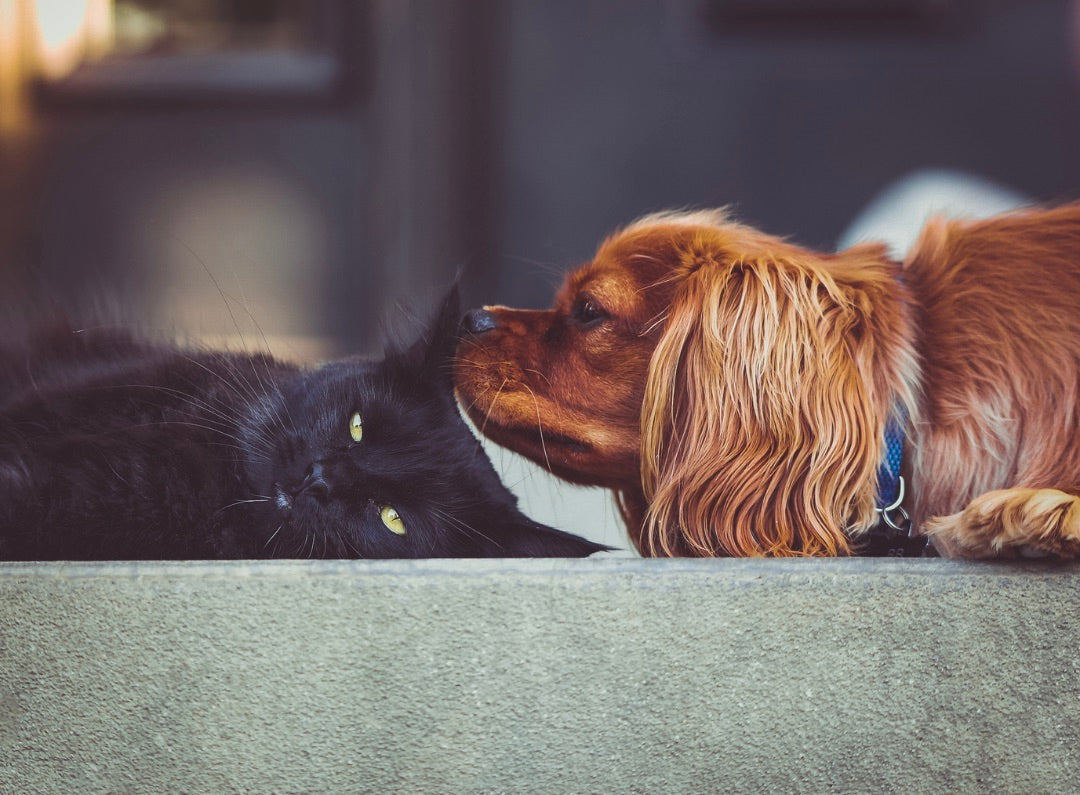Next working day delivery with Royal Mail Tracked 24
How to Tell if Your Dog or Cat is Dehydrated

How can you tell if your dog or cat is dehydrated?
Now that the days are getting hotter as we move into summer, it is more important than ever to ensure that your pets stay hydrated throughout the day. Dehydration can be extremely harmful to pets if left untreated, and can disrupt their bodily functions and cause discomfort. Like for us humans, water is essential in keeping your pet healthy and functioning; regulating body temperatures, and aiding digestion and organ functions are just some of the important bodily processes that water (i.e. good hydration) is a key aspect of.
So how can you make sure your dog or cat stays hydrated as temperatures soar? And what are some key signs of dehydration?
Signs of dehydration
The signs of dehydration in cats and dogs are very similar. The following are some signs of dehydration, or ways that you can easily test for dehydration.
1. Skin elasticity test: By gently pulling up a fold of your pet's skin, you can test for dehydration. Simply pinch a small fold of their skin (between the shoulder blades works well!) and release. If your pet is hydrated, the skin should snap back into place. If the skin remains tented or takes longer to return to its usual place, your pet may well be dehydrated. Note that the skin of older pets naturally has less elasticity, so factor this into your tests.
2. Gum check: For both cats and dogs, healthy gums are those that are pink and moist. This can sometimes be easy to visually recognise, however a good test to do is the gum check. Lightly lift up your pet's lip and press your finger on their gum - you are looking for the pink colour to return quickly after you remove your finger. If the pinky colour fails or takes a while to return, this could be a sign of dehydration. Dry, sticky and/ or pale gums are signs that your pet is dehydrated.
3. Water input and output: Monitoring how much your pet is drinking can be an obvious indicator as to their hydration levels. Minimal drinking or urination can be signs that something is wrong, and that your pet is likely dehydrated. Take extra care to observe your pets drinking and urination habits if they have recently suffered diarrhoea or vomiting, as this incurs substantial fluid loss and your pet will need to take extra effort to rehydrate. A good way to monitor your cat's urination levels is to check the amount of urine in their litter tray.
4. Other key signs: Dull or sunken eyes, a loss of appetite, panting and continual lethargy are all additional signs of dehydration in both cats and dogs. If you think your pet might be suffering from dehydration, it is important to act right away and/ or contact your vet if you are worried.

Image: KONG H20 STAINLESS STEEL DOG WATER BOTTLE
Ways to rehydrate your pet:
1. Access to fresh, clean water: the easiest and most obvious way to help your pet stay hydrated is to provide constant access to clean and fresh water. Placing multiple sources of water around the house is ideal. Ensure their water bowls are clean and topped up regularly, or consider using a water fountain (this is especially great for cats who like to drink from 'natural' (i.e. flowing) water sources).
2. Food and diet: Whether your cat or dog prefers dry food or wet food, there are ways you can ensure their diet is a source to boost their hydration. For dry food, simply soak the dry kibble in water to make it more palatable and water-rich. Wet food is more self-explanatory; switching to wet food is a great way to periodically increase your pet's hydration, as wet food already contains a greater moisture content.
3. Travel and planning: Plan ahead and bring plenty of water along with you for your pet when taking long trips. If walking your dog, make sure to avoid peak heat during the day, instead walking them in the morning or evenings and bringing along a water bottle or bowl so that they have quick access to water should they need.
4. Electrolyte solutions: if your pet is especially reluctant to drink water, consider offering them pet-formulated electrolyte solutions to boost the rehydration process.
5. Seeking medical attention: if your pet is exhibiting multiple signs of dehydration for an extended period of time, or if your pet is unable to keep down fluids, immediate veterinary care is advised. If your pet is suffering from vomiting and/ or diarrhoea, consulting your vet may be helpful in deciphering the underlying cause of this upset, and help to prevent further dehydration.
Dehydration can be really easy to prevent, simply by ensuring your cat or dog has constant access to clean, fresh, cool water. It is particularly important to observe your pet for signs of dehydration as summer temperatures rise. To read more on how you can keep your dog cool this summer, click here.
To shop cat supplies, click here.
To shop dog supplies, click here.
